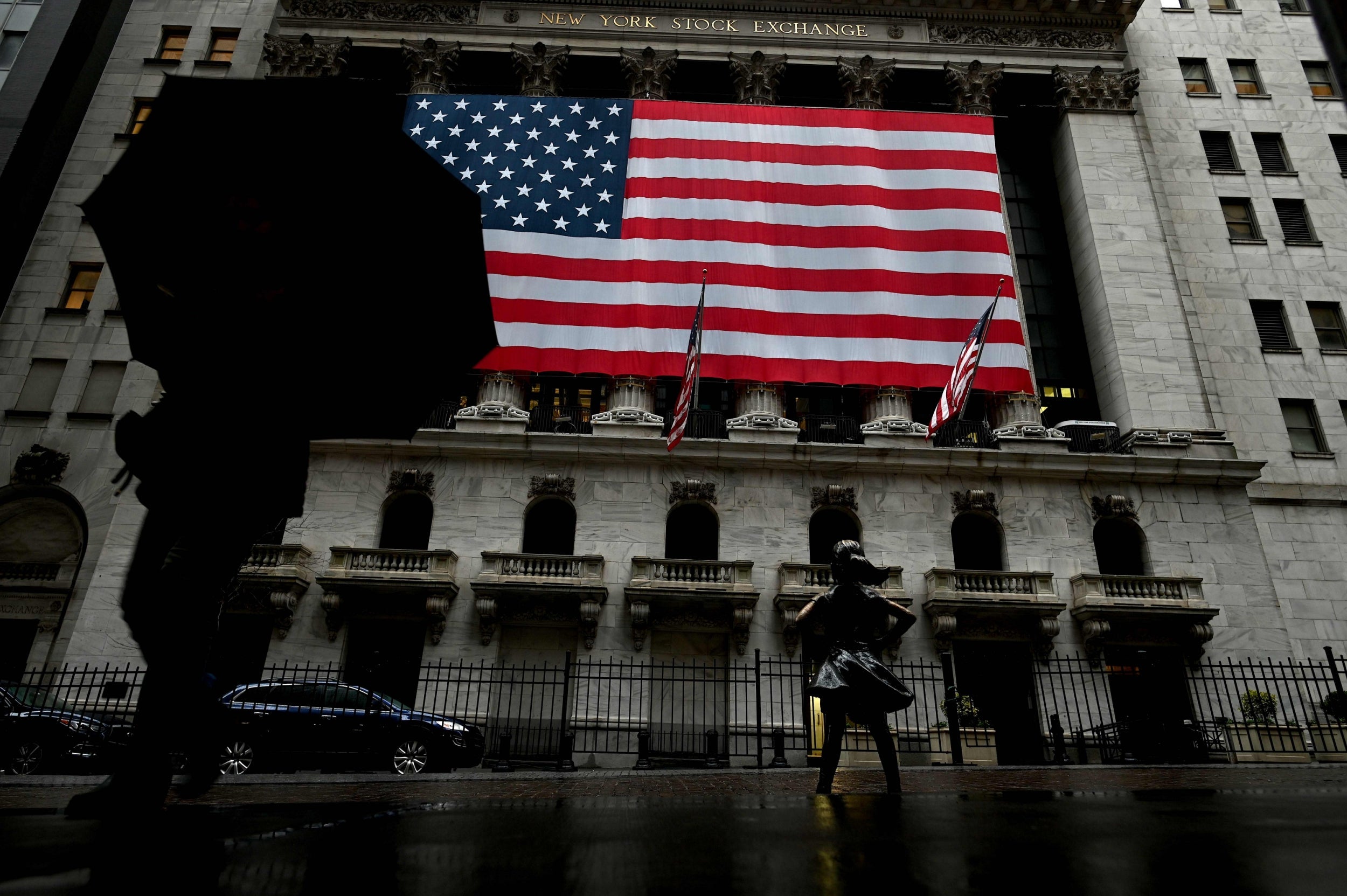Wall Street suffers worst session since March crash in massive sell-off
Market down 7 per cent on fears of second wave of coronavirus and a grim economic forecast from the Federal Reserve

Wall Street suffered its biggest one-day decline since March as fears of a second wave of the coronavirus and dire economic forecasts shook confidence.
At the close of trading the Dow Jones Industrial Average had fallen 1,861 points or 6.9 per cent, closing at 25,128, it’s fourth largest points fall ever — the top three being the crashes that shook the market in March as the scale of the coronavirus pandemic became evident.
The rebound in stocks since then was said by many market watchers to be overheated and certainly did not reflect the dire state of the overall US economy. Today’s trading would appear to reflect that.
At the close of trading, the S&P 500 was down almost 5.9 per cent, and the tech-heavy Nasdaq slid 5.27 per cent, having just hit an all-time high, something lauded by president Donald Trump earlier in the week.
On Wednesday the Federal Reserve quashed much of the optimism investors have had about a swift economic rebound, when it reported that the road to recovery from the worst downturn in decades would be a long one.
The report estimated that the economy will shrink 6.5 per cent this year, in line with other forecasts, before expanding 5 per cent in 2021.
On Thursday the president tweeted that the Fed is often wrong, declaring that the country would have a good third and fourth quarter and that a vaccine and therapeutics for Covid-19 would soon be available.
“That’s my opinion. WATCH!” he wrote.
Like the president, investors had been hoping that as states began to reopen there would be a swift economic bounceback by the end of the year.
However, as cases of Covid-19 continue to climb or surge again in states that have begun to open their economies back up, any sense that an end to the coronavirus pandemic is in sight has evaporated.
Infections and fatalities continue to climb in the US and elsewhere around the world, with the total number of US cases passing 2 million as global cases topped 7.7 million.
Cases are rising in nearly half of the states, with Texas and Florida among those reporting jumps in the number of infections after precautions were relaxed in May.
US Treasury Secretary Steve Mnuchin said in an interview with CNBC on Thursday that there will be no more shutdowns to stop the coronavirus pandemic, despite the flare ups.
Department of Labour figures said that about 1.5 million people applied for unemployment benefits last week. The pace of layoffs each week remains historically high, but is slowing.
A report on Friday showed 2.5 million people being added to payrolls, which sparked some optimism about a fast rebound.
Unemployment, currently at 13.3 per cent, is expected to gradually fall to 9.3 per cent, just under the peak of the last recession caused by the global financial crisis.
With reporting from AP Business Writers
Subscribe to Independent Premium to bookmark this article
Want to bookmark your favourite articles and stories to read or reference later? Start your Independent Premium subscription today.

Join our commenting forum
Join thought-provoking conversations, follow other Independent readers and see their replies